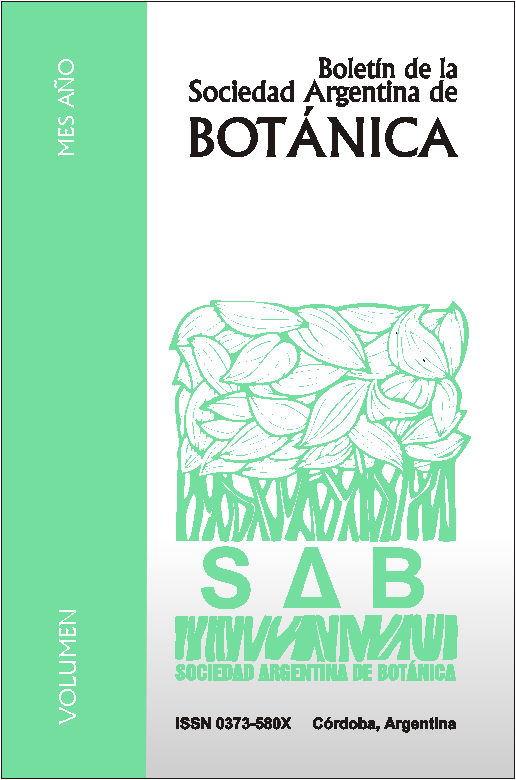Identification of volatile compounds from three species of Cyathodium (Marchantiophyta: Cyathodiaceae) and Leiosporoceros dussii(Anthocerotophyta: Leiosporocerotaceae) from Panama, and C. foetidissimum from Costa Rica.
DOI:
https://doi.org/10.31055/1851.2372.v52.n2.17451Palavras-chave:
Costa Rica, diterpenes, hornwort, Neotropical liverworts, Panama, sesquiterpenes, skatole.Resumo
Cyathodium is a thalloid marchantialean liverwort with five species reported for the Neotropics. Three species that occur in Panama (C. bischlerianum, C. spruceanum, C. cavernarum) and one from Costa Rica (C. foetidissimum) were studied chemically. Female and male plants of the dioecious C. spruceanum were very similar in their chemical composition except for two compounds that were found only in female plants. All samples of C. spruceanum and C. bischlerianum contained, in less than three percent, the sesquiterpenes germacrene D and bicyclogermacrene. The presence of these compounds suggests a close affinity between these two species. Cyathodium bischlerianum contained mainly aromatic monoterpenes with nerolidol as the main compound. Cyathodium cavernarum also had a very distinct chemical composition with an octane derivative as its major compound. Indole compounds were found only in C. foetidissimum. The presence of these compounds in plants from Costa Rica and Tahiti suggests that they could be considered as potential chemosystematic markers for the species. Based on their chemical composition there is a clear distinction between the four species of Cyathodium studied. The chemistry of these species supports previous morphological and genetic studies. Only two compounds could be identified in Leiosporoceros dussii. There is a need for additional genetic and chemical studies on neotropical Cyathodium and Leiosporoceros.
Key
Downloads
Publicado
Edição
Seção
Licença
Proporciona ACESSO ABERTO imediato e livre ao seu conteúdo sob o princípio de tornar a pesquisa livremente disponível ao público, o que promove uma maior troca de conhecimento global, permitindo que os autores mantenham seus direitos autorais sem restrições. 
Material publicado em Bol. Soc. Argent. Bot. é distribuído sob uma licença Creative Commons Attribution-NonCommercial-ShareAlike 4.0 International License. 





